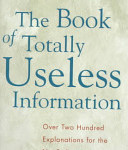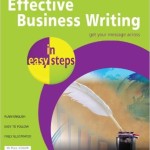The Supreme Irony of Getting Found on the Internet

In nine years of working with business owners to create content, one thing hasn’t changed. It still happens, when I’m discussing what kind of content to provide for new blogging clients, one fear comes to the fore: If they “teach” in their blog or demonstrate the steps in their process, they’ll lose, rather than gain, customers and clients. Why?
- If I teach back-strengthening exercise routines, they won’t need to come to my gym.
- If I reveal the logic behind my system of selecting stocks, the clients won’t need my portfolio management services.
- If I publish recipes and menus, they won’t need my catering services or come to my restaurant.
- If I list the steps for insulating pipes, they won’t use my plumbing services.
Fortunately, I’m able to reassure the clients, such concerns are unfounded. It all has to do with the basic way internet search functions. The only people who are going to be reading your blog posts, I explain, are those who are searching for precisely the kinds of information, products, and services that relate to what you do, what you have for sale, and what you know how to do.
Offering advice and how-to tips is an excellent way, not only to showcase your expertise and experience, but to demonstrate how passionate you are about your work. The supreme irony is that consumers who feel fairly informed are more, not less, likely to make buying decisions.
Another thing I’ve observed is that my team members and I are actually part of a big trend towards delegating and relegating. Concierges perform chores from airport pickup to pet-sitting, from meal preparation to travel planning. In the same way, we content writers know, our clients have businesses and professional practices to run. They need to use their time making and selling products or consulting. With few exceptions, they have no time left to write about what they’re doing, how they’re doing it, and why.
But that’s exactly the kind of information readers seek – how to do things, how to find things, how to keep their things and their bodies in good condition. The supreme irony is that, when it comes to getting found on the internet, “teaching” sells!

 for guidance on best practices. Many of the authors’ “tips and tricks to maximize your impact” will never go out of style. Here are just three examples:
for guidance on best practices. Many of the authors’ “tips and tricks to maximize your impact” will never go out of style. Here are just three examples: Understanding what types of searchers your business is likely to attract can be very important in keyword selection, Matt Bailey explains in
Understanding what types of searchers your business is likely to attract can be very important in keyword selection, Matt Bailey explains in  together of articles from many different only marketing experts.
together of articles from many different only marketing experts. “Tell and sell tradition marketing is dead,” according to
“Tell and sell tradition marketing is dead,” according to  push customers, nor do they have to protect themselves from us.”
push customers, nor do they have to protect themselves from us.” Tidbits from
Tidbits from 
 “If your writing is difficult to understand or written in an inappropriate style, it won’t serve the purpose,” points out
“If your writing is difficult to understand or written in an inappropriate style, it won’t serve the purpose,” points out  principles of structure, style, & readability.” Just to offer you a taste, Royal talks about four types of transition words:
principles of structure, style, & readability.” Just to offer you a taste, Royal talks about four types of transition words:
Follow us online!